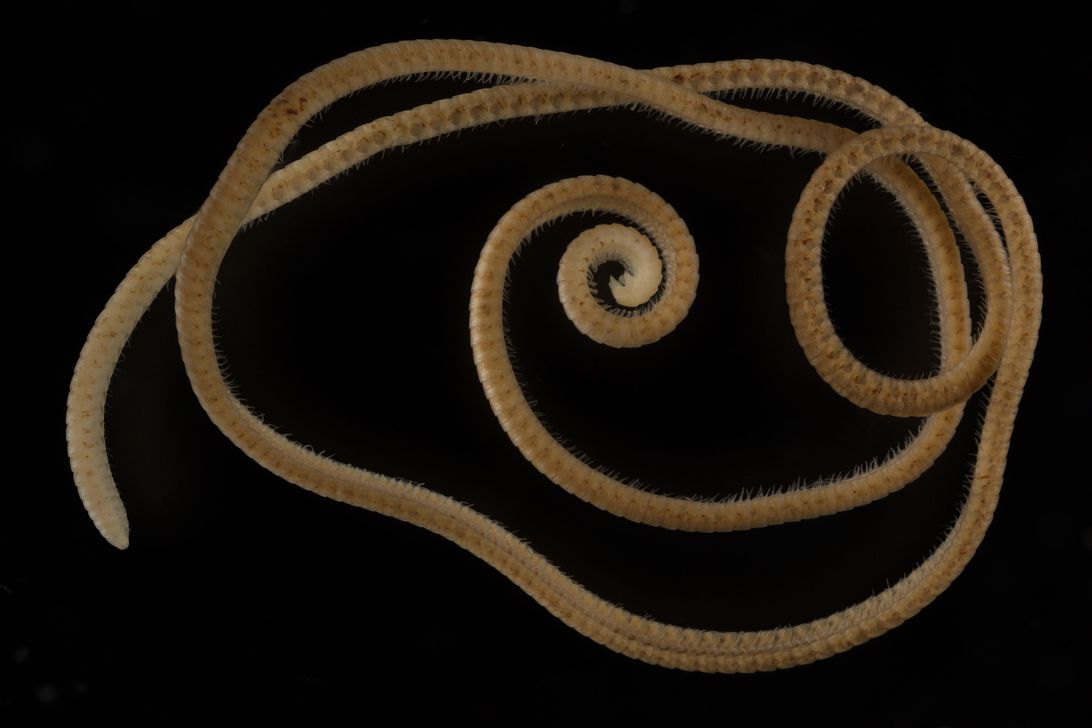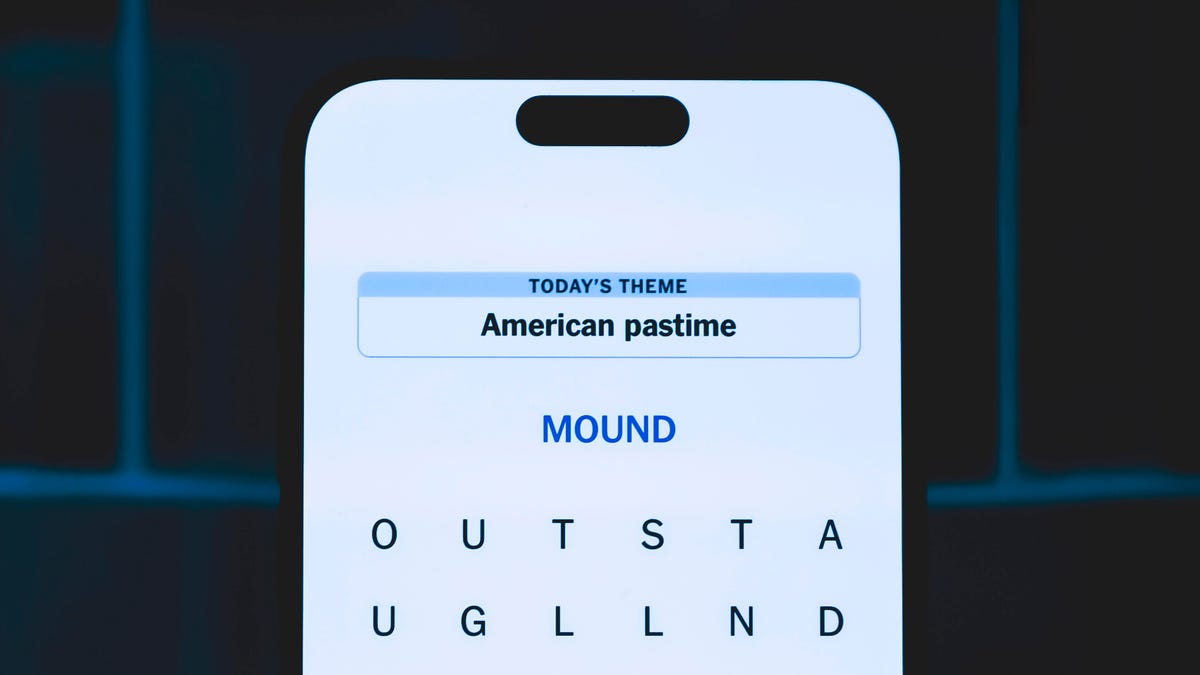Technologies
First ‘true’ millipede with over 1,000 legs discovered deep below Earth’s surface
Emerging from a drill hole in Western Australia, a new record holder for leggiest animal on the planet.

Around the world, more than 7,000 species of millipede crawl across forest floors and garden beds, pairs of legs pumping as they move through soil in search of food. The limbs can number in the dozens to the hundreds, and while the term «millipede» translates to «a thousand feet,» the record number of millipede movers has stood at around 750 legs since the description of a Californian species back in 2006.
«Millipede» has been a misnomer. A thousand feet? A myth. Until today.
«All of the introductory textbooks will have to be rewritten because there is a true millipede now,» says Dennis Black, a millipede expert and adjunct research fellow at LaTrobe University in Australia.
The «true» millipede has been dubbed Eumillipes persephone. The new species was discovered in a borehole, drilled as part of a Western Australian mining operation, almost 200 feet (60 meters) below the Earth’s surface. It’s the first millipede to live up to its multi-legged moniker with a staggering 1,306 legs.
«That’s just an amazing number,» says Paul Marek, an entomologist at Virginia Tech and lead author of a paper documenting the find, published Thursday in the journal Scientific Reports. «I’m still in disbelief.»
Named for Persephone, the Greek goddess of the underworld, the spindly, brown crawler is just over 3.7 inches long and about as thin as a USB cable. The millipede also lives much deeper in the soil than any previously known species, and the story of its discovery makes for a tale of great luck and incredible irony.
Portal to the underworld
The first person to set eyes on the Persephone millipede was Bruno Buzatto, principal biologist at Bennelongia Environmental Consultants in Western Australia. The group specializes in subterranean surveys of animal life and is often contracted by mining companies looking to perform environmental assessments as they search for resources. The mining companies drill the holes that, Buzatto says, are like «portals» into the subterranean world.
To assess what life lurks in the underworld beneath our feet, Buzatto sends «traps» through the portals. He takes a plastic tube with a few holes in the side and fills it with leaf litter. He then drops it down one of the drill holes and leaves it there. Life in the soil is attracted to the litter, hoping to fill its stomach. When Buzatto pulls the trap out a month or two later, it’s often teeming with life.
Buzatto says these traps routinely catch new creatures, some of which have never been seen before. «About 80 to 90% of what we pull up is undescribed species,» he says. So it was no surprise to him when, in August 2020, he laid eyes on an unusual animal he’d never seen before. In a haul plucked from a hole in the Eastern Goldfields Province of Western Australia, Buzatto found an extremely long millipede. «I realized it was a very special animal,» he says.
A few years earlier, Buzatto had been flicking through a research paper about Illacme plenipes, a Californian species of millipede with the record for most number of legs. The lead author of that study was Paul Marek, an entomologist at Virginia Tech. Buzatto shot him an email, attaching a picture of his find.
«I did a quick count and it had 818 legs,» Marek says. «I was pretty pumped about that.»
To make it official, Marek needed to see the specimens, place them under a powerful microscope and analyze their DNA. Buzatto, in collaboration with the Western Australian Museum, shipped specimens to Marek’s lab in the US. In total, the team was able to find and analyze five millipedes, with one female taking out the legs record (1,306) and a male falling just short of the mythic 1,000-leg mark at 998.
Why so many legs?
The Persephone millipede lives in a world with no light and, likely, limited food. Evolution has built it for this world with unique characteristics – similar to, but distinct from, Illacma plenipes.
When Marek was able to look at the Persephone under the microscope, he noticed many similarities to the Illacme plenipes, a millipede that lives halfway across the world, separated by the Pacific Ocean. However, it also had some bizarre features. «It was nothing like other members of the family,» Marek says.
For one, it had no eyes, which is unique in this order of animals. Two, it was unpigmented.
Both changes make sense. Living in the underworld, eyes aren’t all that important. You don’t need to detect changes in the light. Instead, the Persephone has huge antennae. Pigmentation loss occurs in a wide variety of animals that live in places without light, such as caves, but the evolutionary pressures underlying pigmentation loss are still being fully elucidated.
All of the characteristics helped Marek and the team place the species in the order Polyzoniida, distant relatives of the previous leggiest record holder, and suggested the Persephone and Illacma plenipes are an example of convergent evolution – where two distantly related species evolve similar physiological traits to adapt to their niches.
But why does a creature need so many legs?
The answer isn’t all that surprising. Legs are for locomotion. They allow you to move around the world. The researchers haven’t seen live specimens moving around in their home underworld, but they can draw on insights from similar species in nature. Based on earlier studies, Marek and the team suggest the super-elongation and short legs help to burrow through the underworld, providing additional propulsive force as it moves in a telescoping motion.
«The combination of these characteristics really speaks to the importance of being able to traverse deep underground, probably as a result of a limited set of nutrients in the place that it lives,» Marek said.
Minefield
There is a great irony to the discovery, one that several of the authors have wrestled with.
Collecting and describing new species from deep within the soil hasn’t been done to a great extent in Western Australia. There could be dozens of species living underneath our feet that we have never seen before. Before August 2020, no one had ever seen the Persephone millipede. No one knew it existed. And it would have remained that way, if not for Buzatto’s drill hole trap.
«I don’t think we would have ever known about this had it not been for the mineral exploration that’s occurring,» says Dennis Black, the millipede expert from LaTrobe and a co-author on the study. Buzatto notes the mining company, in this instance, paid for the surveys.
At the same time, the main threat to the survival of the species, at least as far as we know right now, would be those same mining operations. If a rich resource was discovered in the same mining exploration what would win out? The millipede? Fortunately for the Persephone, Buzatto notes the area it was discovered in isn’t one in which the mining company is looking to target.
But it raises interesting questions about how to protect species like the Persephone we don’t even know about, so-called «cryptic» organisms contributing to ecosystems we know nothing about. These ecosystems, Persephone shows, are yielding incredible discoveries and preventing further loss of biodiversity. To prevent an anonymous extinction, scientists need to know what’s out there, including deep beneath the surface of the Western Australian desert.
«There couldn be a heck of a lot living over that vast area,» Black says. «We simply don’t have a clue.»
If we did, there’s a chance the Persephone too will be dethroned. Marek says there’s «some correlation» between the depth at which these creatures are found and the number of legs they have. Exploring even deeper below the surface might mean running into another god of the underworld, leggier than we’d ever imagined.
«It’s possible there are longer ones down there,» Black says. «What I want to do is win the lotto, buy some drilling equipment and spend my retirement drilling holes.»
Technologies
Today’s NYT Strands Hints, Answers and Help for Dec. 25 #662
Here are hints and answers for the NYT Strands puzzle for Dec. 25, No. 662.

Looking for the most recent Strands answer? Click here for our daily Strands hints, as well as our daily answers and hints for The New York Times Mini Crossword, Wordle, Connections and Connections: Sports Edition puzzles.
Today’s NYT Strands puzzle has a holiday theme, and if you know a certain Christmas carol, you’ll quickly determine which words to hunt down. Some of the answers are difficult to unscramble, so if you need hints and answers, read on.
I go into depth about the rules for Strands in this story.
If you’re looking for today’s Wordle, Connections and Mini Crossword answers, you can visit CNET’s NYT puzzle hints page.
Read more: NYT Connections Turns 1: These Are the 5 Toughest Puzzles So Far
Hint for today’s Strands puzzle
Today’s Strands theme is: Carolers count.
If that doesn’t help you, here’s a clue: Five golden rings.
Clue words to unlock in-game hints
Your goal is to find hidden words that fit the puzzle’s theme. If you’re stuck, find any words you can. Every time you find three words of four letters or more, Strands will reveal one of the theme words. These are the words I used to get those hints but any words of four or more letters that you find will work:
- RIMS, HIMS, MARS, CHIME, CHIMES, MADS, DATE, DIAL, WAIL
Answers for today’s Strands puzzle
These are the answers that tie into the theme. The goal of the puzzle is to find them all, including the spangram, a theme word that reaches from one side of the puzzle to the other. When you have all of them (I originally thought there were always eight but learned that the number can vary), every letter on the board will be used. Here are the nonspangram answers:
- LORDS, MAIDS, SWANS, LADIES, PIPERS, DRUMMERS
Today’s Strands spangram
Today’s Strands spangram is CHRISTMASDAYS. To find it, look for the C that’s three letters down on the far-left row, and wind across.
Don’t miss any of our unbiased tech content and lab-based reviews. Add CNET as a preferred Google source.
Toughest Strands puzzles
Here are some of the Strands topics I’ve found to be the toughest in recent weeks.
#1: Dated slang, Jan. 21. Maybe you didn’t even use this lingo when it was cool. Toughest word: PHAT.
#2: Thar she blows! Jan.15. I guess marine biologists might ace this one. Toughest word: BALEEN or RIGHT.
#3: Off the hook, Jan. 9. Similar to the Jan. 15 puzzle in that it helps to know a lot about sea creatures. Sorry, Charlie. Toughest word: BIGEYE or SKIPJACK.
Technologies
Judge Blocks Texas App Store Age-Check Law
A preliminary injunction found the Texas law, set to begin Jan. 1, is «more likely than not unconstitutional.»

A new Texas state law set to take effect on Jan. 1 would have required app stores to implement age verification processes. But the law has been put on hold, at least temporarily, by a federal court judge.
As reported by the Texas Tribune, Senate Bill 2420, also known as the Texas App Store Accountability Act, is the subject of a temporary injunction issued by US District Judge Robert Pitman.
Pitman said in his decision that the law as written is broad, vague and «more likely than not unconstitutional.» However, he also wrote the court «recognizes the importance of ongoing efforts to better safeguard children when they are on their devices.»
Don’t miss any of our unbiased tech content and lab-based reviews. Add CNET as a preferred Google source.
The Texas law, signed into law by Governor Greg Abbott in May, requires app store operators — including Apple, Google, Nintendo, Steam and more — to build age verification processes for the storefronts and to only allow downloads to minors who obtain parental consent. The injunction is a ruling in an October lawsuit filed by the Computer & Communication Industry Association.
CCIA senior vice president Stephanie Joyce said in a statement, «This Order stops the Texas App Store Accountability Act from taking effect in order to preserve the First Amendment rights of app stores, app developers, parents, and younger internet users. It also protects parents’ inviolate right to use their own judgment in safeguarding their children online using the myriad tools our members provide.»
Other individuals and the advocacy group Students Engaged in Advancing Texas also filed suits over the law, the Texas Tribune reported.
App Store Accountability Act
The bill author, State Senator Angela Paxton, said the bill was meant to give parents «common sense tools to protect their kids and to survive court challenges by those who may have lesser priorities.»
The language of Texas Senate Bill 2420 does not only include mobile app stores from Apple or Google, but any «website, software application, or other electronic service that distributes software applications from the owner or developer of a software application to the user of a mobile device.»
By that definition, websites with links to browser games or mobile game consoles with download options would fall under the Texas law as written. The law also defines mobile devices as including phones and tablets, as well as any other handheld device capable of transmitting or storing information wirelessly.
The parental consent aspect of the law requires those under 18 to have an app store account affiliated with a parent or guardian to purchase or download applications.
Age verification elsewhere
In an effort to keep adult materials out of reach of minors and to protect children from potentially harmful content and interactions, tech companies have been compelled by law or through legal action to verify the age of users.
Roblox, which has a huge audience of minors, began rolling out stricter age verification after investigations and lawsuits hurt its reputation as a safe gaming space. Australia is perhaps the most large-scale example of a government restricting access to online content. In December, Australia began restricting social media access to those 16 and older. Reddit recently challenged that law.
In the US, age verification laws have primarily targeted adult sites. Texas already has a law on the books that requires adult sites to age-block their content. The Supreme Court upheld that law in a June ruling. The UK has also enacted age restriction rules for adult sites as have other US states.
Technologies
Today’s NYT Mini Crossword Answers for Thursday, Dec. 25
Here are the answers for The New York Times Mini Crossword for Dec. 25.

Looking for the most recent Mini Crossword answer? Click here for today’s Mini Crossword hints, as well as our daily answers and hints for The New York Times Wordle, Strands, Connections and Connections: Sports Edition puzzles.
Need some help with today’s Mini Crossword? Of course, there’s a very Christmassy clue involved. And once you solve the entire puzzle, look at the letters used in all the answers and see what they have in common. (5-Across will tell you!) Read on for all the answers. And if you could use some hints and guidance for daily solving, check out our Mini Crossword tips.
If you’re looking for today’s Wordle, Connections, Connections: Sports Edition and Strands answers, you can visit CNET’s NYT puzzle hints page.
Read more: Tips and Tricks for Solving The New York Times Mini Crossword
Let’s get to those Mini Crossword clues and answers.
Mini across clues and answers
1A clue: ___ King Cole, singer with the album «The Magic of Christmas»
Answer: NAT
4A clue: Body drawings, informally
Answer: TATS
5A clue: Letters to ___ (what this Mini was made with)
Answer: SANTA
6A clue: Huge fan, in slang
Answer: STAN
7A clue: «Illmatic» rapper
Answer: NAS
Mini down clues and answers
1D clue: Grandmothers, by another name
Answer: NANAS
2D clue: Abbr. before a name on a memo
Answer: ATTN
3D clue: Org. with long lines around the holidays
Answer: TSA
4D clue: «See ya later!»
Answer: TATA
5D clue: Govt.-issued ID
Answer: SSN
Don’t miss any of our unbiased tech content and lab-based reviews. Add CNET as a preferred Google source.
-

 Technologies3 года ago
Technologies3 года agoTech Companies Need to Be Held Accountable for Security, Experts Say
-

 Technologies3 года ago
Technologies3 года agoBest Handheld Game Console in 2023
-

 Technologies3 года ago
Technologies3 года agoTighten Up Your VR Game With the Best Head Straps for Quest 2
-

 Technologies4 года ago
Technologies4 года agoBlack Friday 2021: The best deals on TVs, headphones, kitchenware, and more
-

 Technologies4 года ago
Technologies4 года agoVerum, Wickr and Threema: next generation secured messengers
-

 Technologies4 года ago
Technologies4 года agoGoogle to require vaccinations as Silicon Valley rethinks return-to-office policies
-

 Technologies4 года ago
Technologies4 года agoOlivia Harlan Dekker for Verum Messenger
-

 Technologies4 года ago
Technologies4 года agoiPhone 13 event: How to watch Apple’s big announcement tomorrow
